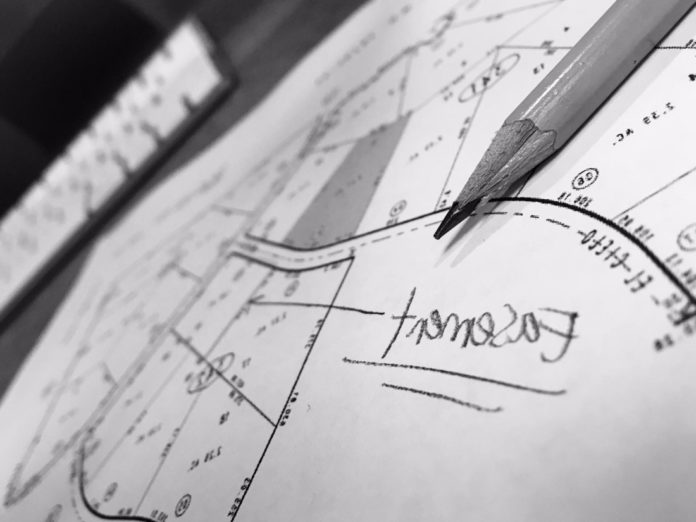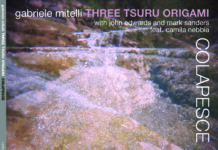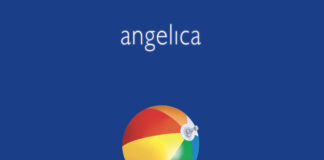La notazione grafica è un affascinante strumento a disposizione dei compositori che desiderano impegnare i musicisti in una relazione di co-creazione, in cui è importante aver dimestichezza con l’improvvisazione. Le registrazioni di Bruce Friedman e John Teske, due compositori che lavorano con la notazione grafica, illustrano le forme che la notazione grafica può assumere e i suoni che può ispirare.
Earle Brown’s iconic December 1952—a sparse group of small rectangles and line segments parallel and perpendicular to each other on a white field—epitomizes the graphic music notation that arose within Western art music in the early postwar period and continues to thrive today. Looking more like an unfinished Mondrian than a musical score in any conventional sense, December 1952, along with the other graphic scores that made up Brown’s Folioand Four Systems, offered composer and performer alike the freedom of conception and realization that its deliberate ambiguity entailed.
It is this ambiguity and freedom—quite apart from a unique form of eye appeal—that make graphic scores an attractive medium for composers who wish to involve performers in a relationship approaching co-authorship, and for performers who are conversant with or predominantly involved in improvisation. To the extent that a performer can read and interpret them even in the absence of training in conventional musical literacy, graphic scores have the added virtue of being well-suited to this current musical moment, which Richard Taruskin has described as “post-literate.” For the composer, this means having the option of drawing on a wider population of potential performers of varying reading abilities, allowing him or her to put emphasis on the performers’ creative responses to novel situations and visual stimuli requiring interpretive strategies markedly different from those called for by standard notation.
Two recordings by contemporary composers working with graphic scores illustrate the forms these scores may take, and the sounds they may incite.
Bruce Friedman, a trumpeter and composer living and working in the Los Angeles area, has developed a modular system of graphic notation he has named O.P.T.I.O.N.S., an acronym for Optional Parameters To Improvise Organized Nascent Sounds. Each module consists of a symbol or small grouping of symbols, some alluding to standard music notation and some not. An example of the latter would be a serpentine line followed by a dot or dashes, which could be interpreted as a sequence of rising and falling pitches or a sequence of legato and staccato phrases. A score can be made up of a combination of these modules, which can be read in any order the performer chooses. For a recording of O.P.T.I.O.N.S.-derived compositions, realized in 2005 by an eleven piece electroacoustic ensemble including Friedman on trumpet, the symbols were treated as indicating textures—“monochromatic textures,” or MCTs as Friedman termed them.
 The four pieces are generally pointillistic and actively polyphonic in sound, with each instrument functioning as a soloist within the ensemble. The first track, the shortest of the four, is performed by the collective, while the other three feature solos and duos set within the larger group. The sound is open and marked by a clarity of line and color, a notable achievement for a group this size. The coordination and uniformity of phrasing in some of the passages seem to indicate that at least some parts of the scores were conducted and/or given a previously worked out interpretation. Whatever the cause, within the ensemble’s natural polyphony an overarching coherence forcefully emerges.
The four pieces are generally pointillistic and actively polyphonic in sound, with each instrument functioning as a soloist within the ensemble. The first track, the shortest of the four, is performed by the collective, while the other three feature solos and duos set within the larger group. The sound is open and marked by a clarity of line and color, a notable achievement for a group this size. The coordination and uniformity of phrasing in some of the passages seem to indicate that at least some parts of the scores were conducted and/or given a previously worked out interpretation. Whatever the cause, within the ensemble’s natural polyphony an overarching coherence forcefully emerges.With his Six Graphic Scores, double bassist/composer John Teske takes a different approach. Each of the scores, composed and recorded in 2010, places unconventional markings on seven conventional five-line staves arranged in a vertical stack. The key to interpretation seems fairly straightforward and intuitive: The horizontal axis represents relative duration and the vertical axis relative pitch, while the shapes and clustering of marks indicate textures. Laid out in order, the six scores appear to trace a cyclical trajectory of textures running from lesser to greater density and intensity and then back again.
The twelve tracks consist of realizations of each score first by an ensemble made up of a string sextet plus accordion, trumpet, flute and guitar, and then by a ten-piece vocal ensemble. The first score, a more or less straight line running through the middle of the middle stave, is realized as a quiet, sustained tone subject to microtonal fluctuations. The third score, which takes the same basic line and adds to it intervals of densely clustered marks, is accordingly realized as a long tone punctuated by louder, thicker and more energetically varied sounds. The fifth and sixth scores begin with dense, active groupings that gradually disaggregate into long, quieter tones.
Just as important as the range and clustering of pitches and the profile of phrases is the management of dynamics. In fact texture on these realizations is as much a function of the quiet undertows and sudden upsurges of sound as it is of any other musical parameter. The fundamental dynamic here is pianissimo, sometimes punctuated with startling leaps of volume. The often austere appearance of the scores is matched by a parallel understatement of sound: These sparsely marked staves really do look like what the music sounds like.
Friedman and Teske’s works provide only two examples of contemporary approaches to alternative notation; others could easily be added. What this is evidence of is the flourishing of a kind of compositional counter-tradition amenable to the cross-pollination of genres and open to composers and performers of varying backgrounds and skill sets.









